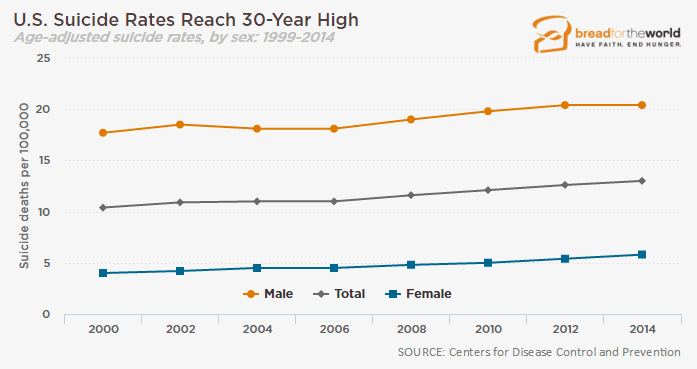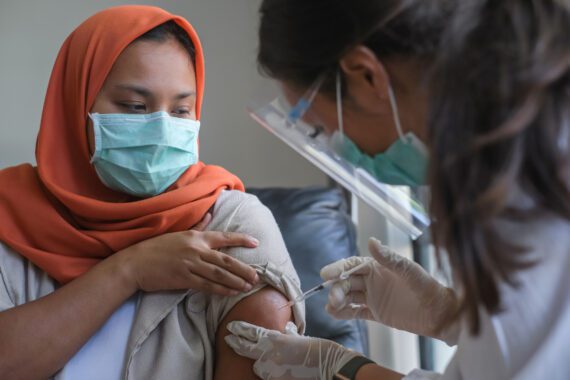By Derek Schwabe
Editor’s note: This post is part of a weekly, year-long series called the Nourishing Effect. It explores how hunger affects health through the lens of the 2016 Hunger Report. The report is an annual publication of Bread for the World Institute.
Suicide rates in the United States have reached a 30-year high, according to new data released this month by the Centers for Disease Control and Prevention (CDC). The increases are another sign of the mounting health costs associated with increased economic stress confronting Americans. In 2014, the most recent year for which data is available, the population-wide suicide rate was 13 per 100,000 people, the highest since 1986, compared to 10 per 100,000 in 2000.
Most critically, the data show that the causes of suicide are cross-cutting, because the increases were observed across nearly all racial, ethnic, gender, and age groups. Middle-aged women and men had the sharpest spikes, with their suicide rates increasing by 63 percent and 43 percent respectively over the 15-year period covered by the study (1999-2014). The rate of increase was twice as high for the second half of the period, starting just before the Great Recession of 2007-2008.
Researchers have long observed a direct association between economic stress or hardship and suicide rates; data stretching back to the Great Depression consistently show an association. Though scholars point to a number of causes for the rise in suicides, there is strong consensus that growing economic hardship is chief among them. The Great Recession dealt a decisive blow to the middle class, but it was the gradual erosion of incomes and wealth since the 1970s, largely passing unnoticed at the time, that left so many Americans vulnerable when the recession hit in 2007. Decades of stagnant incomes, rising costs, and underinvestment in public services such as education and health care have severely weakened the American middle class. Poverty and hunger rates reached high levels that have stubbornly persisted over the years since 2009 when the economy has supposedly been recovering. It’s not surprising that poverty and hunger have not fallen — since 2009, 95 percent of the economic gains have gone to households in the top 1 percent of net worth.
The 2016 Hunger Report, The Nourishing Effect, looked at the health-related costs of hunger in the United States. Even using very conservative assumptions and figures, the costs totaled more than $160 billion in 2014. Of the various factors that contributed to the total cost, the mental health consequences of hunger was by far the largest, totaling $78.7 billion or about half of the total.
Nearly one in three working families is paid so little that they have difficulty affording even the very basics. Stagnant wages and unequally shared economic growth have left families — even those working full time — with mounting levels of the toxic stress associated with poverty and food insecurity, and it’s clearly taking an expensive toll on them, in dollars, health, and lives.
Derek Schwabe is a research associate in Bread for the World Institute.



